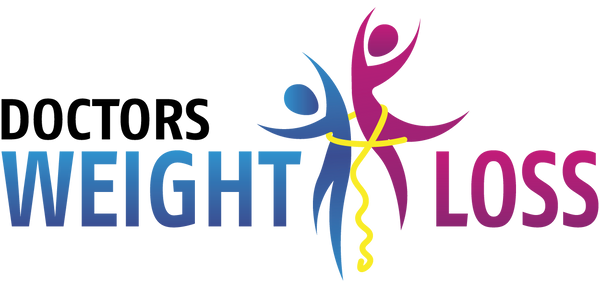Nutrition for weight loss and wellness can be complicated, especially with so much information that is readily available on the internet! Should one adhere to a paleo nutrition plan or a gluten-free diet; what about, keto, veganism, or the zone diet? Different food regimens work for different people but one thing is for certain--no matter what type of diet you are following, keeping the following seven principles in mind will assist with your weight loss and wellness goals.
Principle I: Focus on nutrient-dense foods.
Eating foods that are chockful of vitamins, minerals, healthy fats, and quality proteins will not only give your body what it needs to be healthy, but you will also stay satiated for longer which helps to prevent cravings. Eating foods that have empty calories, causes your body to search for and crave more food as its nutritional requirements are not being met. Not to mention, empty-calorie foods are also usually filled with sugar and carbohydrates which sends the body into a cycle of sugar high, followed by sugar crash, followed by more cravings for sure--it's an endless cycle!
Principle II: Be mindful of your calorie intake.
Now this principle doesn't mean you have to be a slave to counting calories or weighing food. It is a good idea to have a general idea of how many calories you specifically need to maintain your current weight or to reach your goal weight. In turn, you may also want to familiarize yourself with your daily intake of calories by simply glancing at the nutrition label of the foods you eat, but you only need to do that for a couple of days to get a general idea of how much you are consuming each day. Being mindful of your calorie intake means to eat when you are hungry and stop when you are content but not overly full.
Principle III: Eat an abundance of healthy fats.
Past research has demonized the consumption of fats and the popular misconception that all fat is bad still remains in many nutrition sources despite the fact that recent studies have shown a correlation between healthy fat consumption with weight loss and improved cholesterol levels. Healthy fats help to keep you fuller for longer and they also assist with blood sugar level stabilization. Some examples of healthy fat foods are whole eggs, salmon, nuts, seeds, and avocado.
Principle IV: Higher intake of quality proteins.
Several nutrition books and resources still recommend as little as forty-five grams of protein per day despite the fact that the amino acids found in protein are the building blocks of your cells and tissues. Like with healthy fats, quality proteins also help to keep you satiated while maintaining even blood sugar levels. There are an abundance of both animal- and plant-based proteins such as eggs, poultry, red meat, fish, shellfish, beans, lentils, spinach, broccoli, nuts, and seeds.
Principle V: Limit or eliminate cow’s milk.
Many nutrition sources are still recommending three servings of cow’s milk per day due to the fact that it has calcium. Unfortunately, commercial cow’s milk can contain large amounts of oestrogens and progesterone which may not be ideal for human consumption. In fact, some studies are suggesting that intake of commercial cow’s milk may be cause of concern to the general public and more research may be needed. Now if you like a little bit of creamer in your tea or a serving of Greek yogurt or Kefir (great sources of probiotics), that’s one thing but consistently high intake of dairy may be best to be avoided. You can find a calcium in a variety of non-dairy foods such as Chia seeds, sesame seeds, almonds, dried figs, white beans, kale, broccoli, and sardines.
VI: Restrict fast food and junk food.
Yes, it may happen (and it may happen more than once)—you could have a craving for something at the drive through! You don’t have to eat perfectly 100 percent of the time to reach your goals, however fats food and junk food cannot be relied upon as a normal staple in your food regimen. Most of these selections are high in sugar, carbohydrates, additives, and preservatives, and they do not offer naturally occurring nutrients that are imperative to your wellness. Occasional cheat meals are absolutely fine, but sticking to your healthy food plan 90 percent of the time will help you achieve the best results.
Principle VII: Choose low-glycemic foods as a primary carbohydrate source.
The Glycemic Index is a measurement tool used to gauge how carbohydrate-containing foods affect blood sugar levels. Selections such as bread, crackers, pasta, and cereals are high-glycemic, causing dramatic rises and dips in blood sugar levels which can lead to cravings, fatigue, and type II diabetes. Low-glycemic carbohydrate choices such as green vegetables, berries, beans, and quinoa help to maintain even blood sugar levels and satiety by breaking down into glucose at a much slower rate. In addition, the low-glycemic carbohydrates mentioned above are minimally processed and contain a variety of naturally occurring, bioavailable vitamins and minerals as opposed to the fortified, synthetic nutrients found in their high-glycemic counterparts.
Like I mentioned previously, nutrition can be complicated as there is so much information out there. These seven principles can be applied to most dietary lifestyles and will assist you with your goals. If you're still feeling like you're a little lost and need a very specific plan to follow, check out our 30-Day Program here. You'll be given everything you need to eat (and when) to lose as much as 20 pounds in as little as one month!






